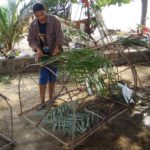Fishing with a stomping basket has been a traditional craft in Vietnam for centuries. Postcards from the French colonial era depict this unique fishing method as a typical way for locals to catch fish. While similar techniques exist in other Southeast Asian countries, they have not gained the same popularity as in Vietnam.
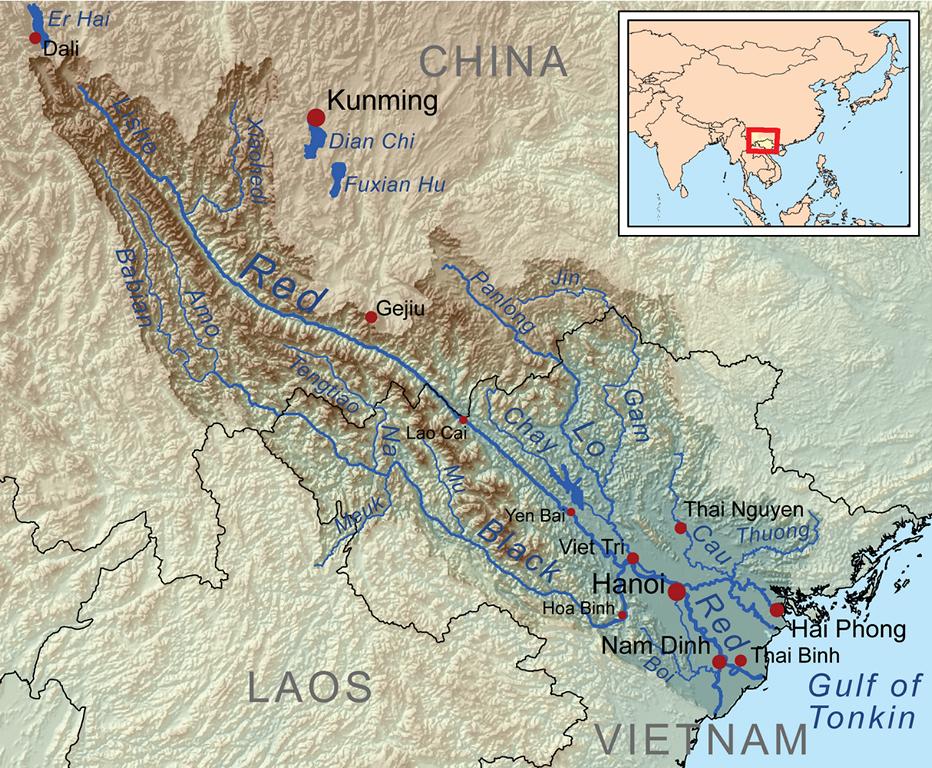
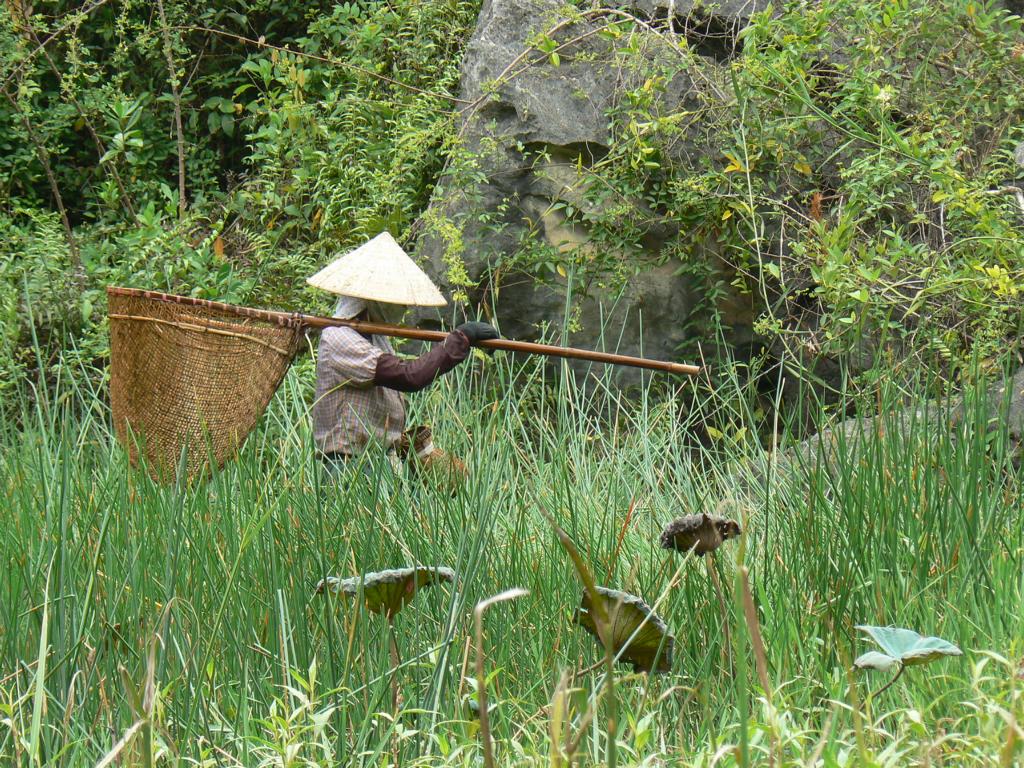
The favorable conditions of the Red River basin, particularly in the Northern Delta, have made it the primary area where stomping basket fishing is practiced. In contrast, the Mekong Delta, which constitutes the Southern Delta, does not widely use this fishing technique. However, it is important to note that the Northern Delta has undergone significant industrialization in recent times, resulting in many riverside areas being transformed into housing developments or privately owned properties.
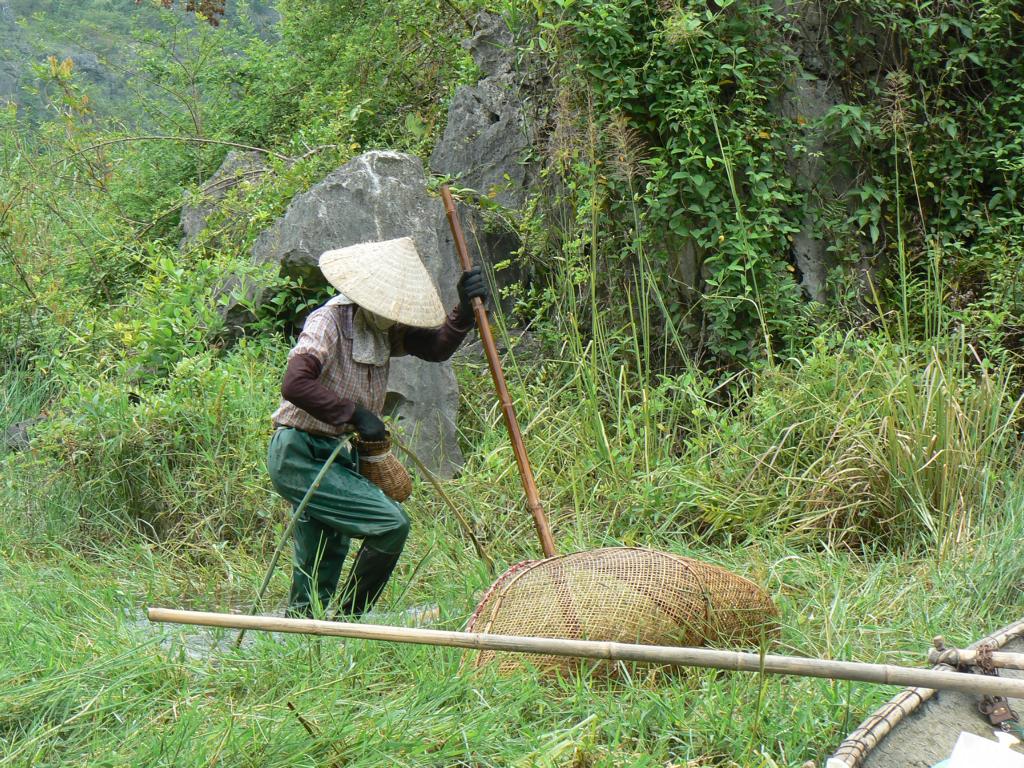
Stomping basket fishing requires specific conditions, such as water depths ranging from half-knee to half-upper-leg deep and a substantial vegetation presence. Additionally, the area should be undisturbed, unpolluted, and easily accessible. Unfortunately, in today’s modern world, finding locations that meet all these criteria has become increasingly difficult. Furthermore, due to the allure of educational and employment opportunities, most of the younger generation in Vietnam tends to migrate to cities, further contributing to this traditional craft’s decline. As a result, stomping basket fishing is now primarily practiced in remote rural areas or regions that receive government protection to preserve this fading tradition.
Equipment used for ‘stomping’
The fishing tackle used in stomping basket fishing consists of a sizable basket with a scoop-like shape, equipped with a long bamboo handle and a stomper board with a holding device. Additionally, fishermen/women in this activity typically wear a trapdoor basket to store the caught fish, shrimps, and crabs. Moreover, the fishermen/women must protect themselves against the elements while participating in this craft.
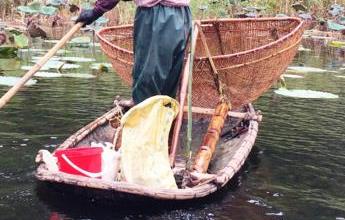
Scooping basket
The scooping basket used in stomping basket fishing typically measures approximately 1.5 meters in width and 1 meter in depth. The frame along the lower lip of the basket is designed to be straight, enabling it to cover a flat, muddy bottom effectively. A 2.5-meter-long bamboo pole is positioned in the middle of the scoop to facilitate handling. The entire device must be as lightweight as possible, which is achieved by using thin and flexible bamboo strips for weaving. The main frame of the scoop is constructed from a pliable bamboo species with long internodes. Additionally, the pole is ideally made from a bamboo species that features thin stems but numerous nodes, providing increased strength to the overall structure.
Stomper
On the other hand, the stomper board is crafted from a thick bamboo stem with numerous nodes. It measures approximately 1.5 meters long and has holes on each end connecting the holding string. Unlike a permanent connection, the bamboo string is designed to move up and down, producing a rattling noise when operated.
To create a relatively flat stomper board, one-third of the diameter of the bamboo stem is cut out between the strings. A 50 mm/2” hole is also cut in the middle of each internode. These holes allow water to flow easily, resulting in suction-like noises.
Fish holding basket
The holding basket used in stomping basket fishing is traditionally woven from bamboo strips and features a woven non-return inlet valve. This valve allows caught fish to enter the basket while preventing them from escaping. The basket is securely attached to the bearer’s hip using a string or rope.
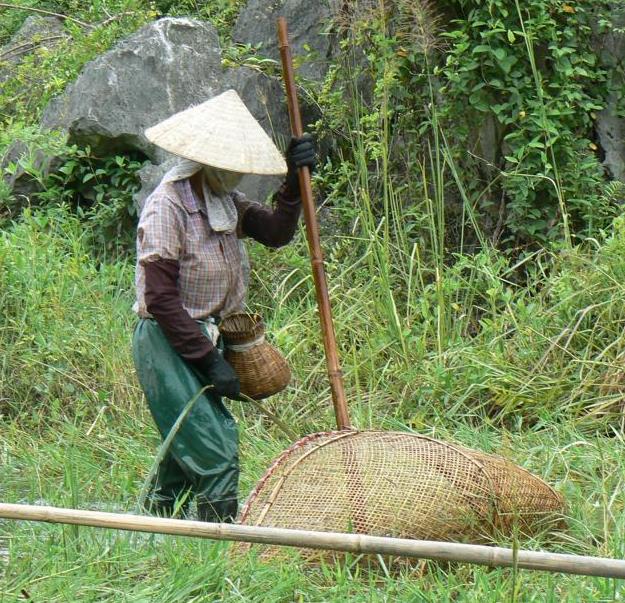
Recommended clothing
In Vietnam, conical straw hats have traditionally protected the face and head against the sun and rain for centuries. These hats help to keep the head cool and are highly effective in their purpose. To further protect against harmful UV rays, it is advisable to ensure that all exposed skin is covered. In the past, fishermen and -women often walked barefoot or wore simple canvas shoes. However, in modern times, waders with connected boots have become the popular choice for footwear in this activity.
Fishing technique
Once a suitable fishing spot is identified, the operator will position the scooping basket as far forward as possible. Behind the scoop, parallel to it, the stomping board is placed and lifted using its string handle. With a forceful motion, the stomping board is repeatedly stomped upon, lifted, and stomped again. This process is typically performed around three times before moving the stomping board closer to the scoop for further stomping.
Afterward, the scoop’s handle pole is swiftly moved backward in a circular motion. This action aims to trap all the aquatic creatures that sought refuge within the scoop area due to the noises and vibrations generated by the stomping board. The scoop is lifted, and the catch is transferred and stored in the holding basket. This sequence of motions is repeated repeatedly in different locations throughout the fishing session.
The full-length video (about 1 minute long) can be found here in my Video section.
Lessons learned from fishing with a stomping basket:
- The scooping basket and stomping board can be crafted using readily available natural materials from the surroundings.
- The technique of stomping can be quickly learned and mastered.
- This fishing method allows for the capture of various species that can be used as food. These include small fish, eels, shrimp, crabs, and water beetles.
- Ensuring adequate sun protection for all body parts is crucial during fishing.
Basket fish traps at the seashores of Eastern Africa
Trapping Snakeskin Gourami in the Mekong Delta
Fish trapping at a fast-flowing brook in Vietnam
Crafting a bamboo fish trap in Thailand
.



